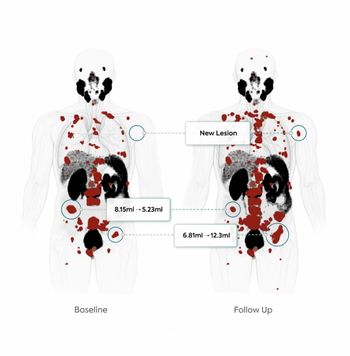
Interventional Radiology: Tiered Approach to Patient Procedures Can Minimize COVID-19 Risk
A five-tiered approach to cross-sectional interventional procedures can help radiologists determine which patients to treat first, minimizing likelihood of viral transmission.
Interventional radiologists should consider a tiered approach to triaging patient procedures as a way to continue to combat the further spread of COVID-19 infection, say industry leaders.
In an article published June 3 in the
The nature of these procedures – frequently modality-guided, including fluid aspiration, drainage catheter placement, percutaneous biopsy, and tumor ablation – means all members of the interventional team must be particularly adept at putting on and taking off personal protective equipment. And, in some instances, patients require an admission to manage post-procedure complications.
To minimize any treatment delays that could cause patient harm, the team, led by Ghaneh Fananapazir, M.D., director of ultrasound at the University of California-Davis, suggested a five-tier approach for both inpatient and outpatient scenarios.
“Each patient must be evaluated independently for the risk-to-benefit ratio given the host of possible outcomes for each individual,” the team wrote. “A tiered approach should be considered with target windows of when to perform the procedures.”
They suggested: urgent procedures, procedures that should be performed within two weeks, procedures that should be performed within two months, procedures that can be delayed by two months, and procedures that can be delayed by six months. See Table 1 for examples of procedures that fall into each tier.
“Each procedure request must be triaged into a tier on a case-by-case basis,” the team cautioned, advocating for referring physician consultations, “because clinical circumstances can dictate one procedure as urgent, whereas different clinical data may render the same procedure safe to delay.”
Continued Safety Measures
In addition to the tiered system, Fananapazir’s team outlined specific safety protocols interventional radiologists should implement to protect themselves, their staff, and their patients during every procedure.
Hygiene: Receptionists and outpatients must follow appropriate hygiene procedures at all times.
- Limit patient interaction, obtaining consent in the procedure room or documenting oral consent in the medical record.
- Pens, clipboards, and shared surfaces must be sanitized.
- Patients must be dropped off and picked up outside the outpatient facility – staff can contact a family member or caregiver via phone call or text when the patient is ready.
- Recommended social distancing must be observed, as much as possible, when escorting a patient to a procedure.
Limit Personnel: Despite educational needs, academic institutions should consider limiting personnel in the interventional suite.
- Personnel present should have a direct and essential role in the procedure.
- Medical students, residents, and fellows should remain outside the procedure suite.
- Exceptions can be made for high educational value or a need for a second operator.
- CT technologist and sonographers should not be in the interventional suite – open, organize, and cover with a sterile plastic drape any needed supplies prior to the patient’s arrival in the room.
Create a Radiologist List: Develop a list of attending radiologists who can perform procedures.
- Identify interventional radiologists who are best suited for particular procedures, limiting the number engaged to streamline the proper and swift use of personal protective equipment.
- Keep cross-sectional interventionalists who are at greater risk for COVID-19 infection on a back-up list.
Perform Procedures: Be sure procedures are conducted in a manner that will strictly control the risk of viral transmission.
- Transport patients directly to the procedure room, and take them directly back to the COVID-19 unit, intensive care unit, or inpatient room post-procedure.
- Plan routes to-and-from the procedure room carefully to minimize contact with others.
- Perform ultrasound-guided procedures at the bedside of COVID-19-positive patients.
- Keep a mobile ultrasound machine in the intensive care unit or, if one exists, the COVID-19 unit to be used for interventional procedures, vascular access guidance, or point-of-care thoracic and non-thoracic ultrasounds.
Disinfect the Room: Continue to follow all recommended sanitation procedures.
- Follow the facility’s air circulation protocols.
- Use 70-percent ethyl alcohol solution to disinfect small areas between uses, and 0.5 percent sodium hypochlorite solution to disinfect surfaces after possible covid-19 exposure.
- Clean and sterilize ultrasound probes per manufacturer instructions.
- Wash soiled bedding, towels, and clothes used with COVID-19-positive patients in 60o-90o water with detergent after removing them from the clinical area.
- Wipe down lead aprons used in CT- or fluoroscopy-guided procedures with disinfectant.
Newsletter
Stay at the forefront of radiology with the Diagnostic Imaging newsletter, delivering the latest news, clinical insights, and imaging advancements for today’s radiologists.



























